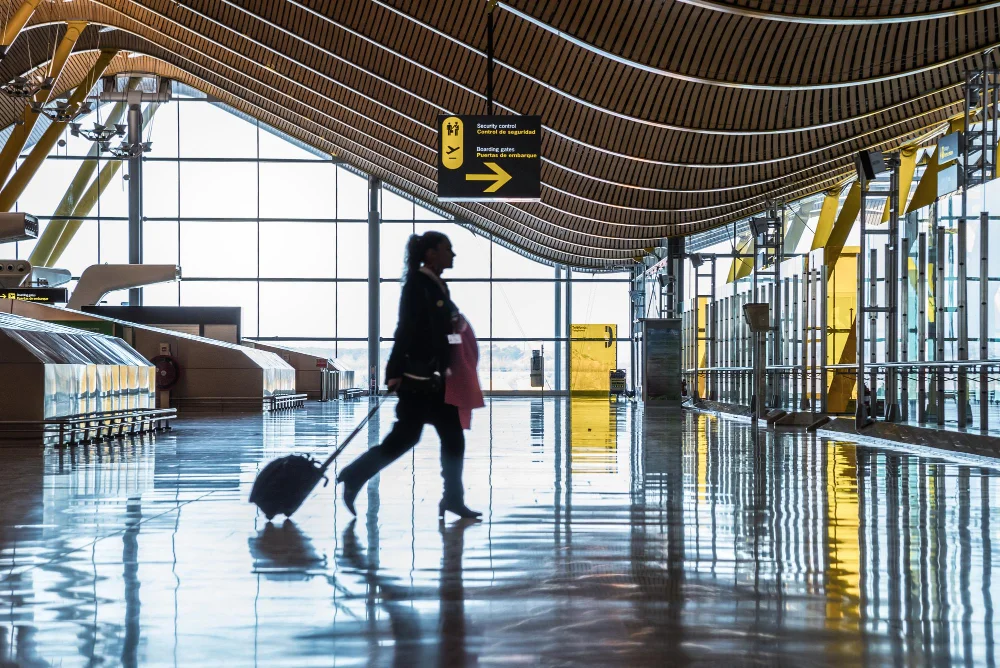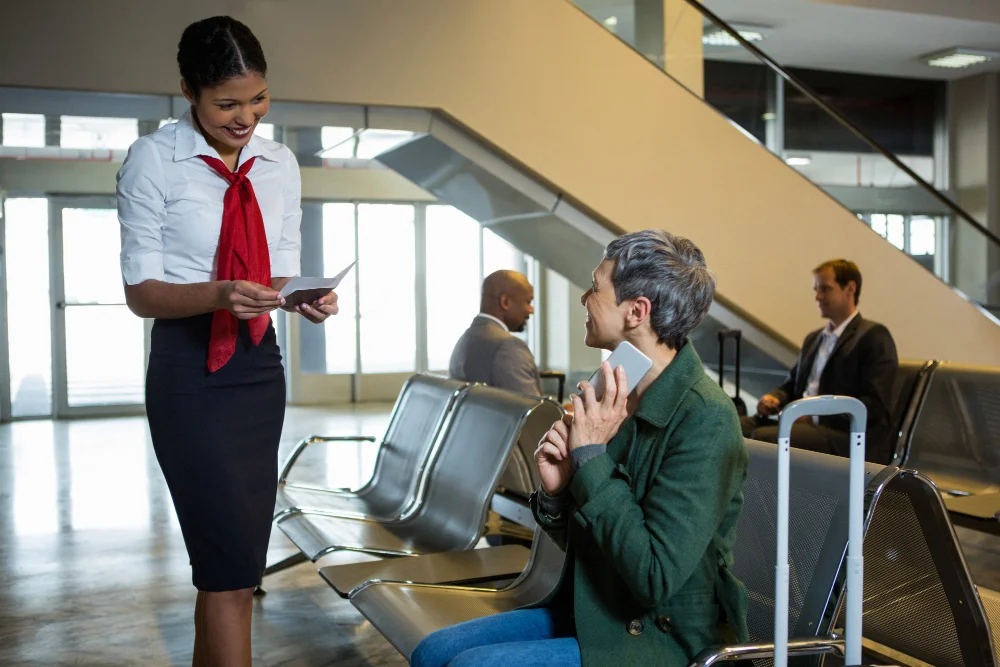Delta Flight DL275 Diverted LAX: In-Flight Emergency Analysis
Delta Flight DL275, operating from Detroit Metropolitan Wayne County Airport (DTW) to Tokyo Haneda Airport (HND), was diverted to Los Angeles International Airport (LAX) due to an unexpected issue.
This rare event caught the attention of aviation enthusiasts and passengers alike, highlighting the critical importance of safety measures and decision-making during long-haul flights. The incident provides a real-world example of how airlines manage unforeseen technical issues while prioritizing passenger well-being.
The diversion occurred approximately 12 hours into the transpacific flight when the crew detected a malfunction in the Rolls-Royce Trent XWB engine’s anti-ice system. This system is essential for preventing ice buildup that can impair engine performance.
Beyond the technical aspects, the incident also sheds light on the passenger experience during in-flight emergencies. Anxiety and uncertainty are common when flights deviate from their planned routes, but effective communication and proactive support can significantly reduce stress.
Delta Flight DL275 Diverted LAX: Flight Overview & Route Details
Delta Flight DL275 is a long-haul international service connecting Detroit Metropolitan Wayne County Airport (DTW) to Tokyo Haneda Airport (HND). Operating daily with a modern wide-body aircraft, the flight typically carries hundreds of passengers, including business travellers, tourists, and connecting passengers from domestic hubs.
Covering a distance of approximately 6,300 miles, the journey usually takes around 13 hours, traversing complex airspace over North America, the Pacific Ocean, and East Asia.
Due to the extensive duration and remote stretches over the ocean, flights like DL275 require precise planning, advanced navigation systems, and continuous monitoring of aircraft performance.
The route poses several operational challenges, particularly because a significant portion of the flight occurs over the North Pacific, where alternate airports are limited. Weather conditions, jet streams, and air traffic coordination are critical considerations for the flight crew. Airlines like Delta equip these flights with experienced pilots, robust safety protocols, and contingency plans for emergencies
The Unexpected Diversion

Approximately 12 hours into Delta Flight DL275, the crew detected a malfunction in the engine’s anti-ice system, a critical component for safe operation over the North Pacific. Continuing to Tokyo posed potential risks, so the pilots decided to divert to the nearest suitable airport. Los Angeles International Airport (LAX) was selected due to its technical capabilities and status as a major Delta hub.
This swift decision prioritized passenger safety and ensured a controlled emergency landing. Passengers experienced surprise and concern as the flight path changed unexpectedly, but clear communication from the crew helped maintain calm in the cabin. Flight attendants provided updates and reassurances, explaining the situation and next steps.
Delta Airlines coordinated with LAX authorities to prepare for the aircraft’s arrival. Ultimately, the diversion was executed smoothly, minimizing risk and disruption for everyone on board.
Delta Flight DL275 Diverted LAX: Engine Anti-Ice Malfunction
The primary reason Delta Flight DL275 diverted to LAX was a failure in the Rolls-Royce Trent XWB engine’s anti-ice system. This system is essential for preventing ice buildup, which can significantly affect engine performance and safety.
Upon detecting the malfunction, the crew immediately assessed whether it was safe to continue to Tokyo or divert to the nearest suitable airport. Following safety protocols, they prioritized passenger safety and decided on a diversion to LAX, which offers technical readiness and serves as a major Delta hub.
Key Points:
- Early detection via onboard diagnostics prevented escalation.
- Passenger safety was prioritized over maintaining the flight schedule.
- LAX was selected for its technical capabilities and Delta hub infrastructure.
Why LAX Was Chosen for Delta Flight DL275 Diverted to LAX

When Delta Flight DL275 experienced an engine anti-ice system malfunction, the pilots had to select the safest possible airport for an emergency landing. LAX was chosen for its proximity, technical support, and services, enabling staff to manage the aircraft and passengers safely and efficiently. The decision reflects the airline’s commitment to safety and operational preparedness in emergency situations.
Key Reasons LAX Was Chosen
- Proximity to Aircraft Location: LAX was the nearest major airport from the flight’s position over the North Pacific, minimizing the risk of extended flight with a technical malfunction.
- Advanced Maintenance and Repair Facilities: LAX offers specialized equipment, and skilled engineers actively inspect and repair complex engine systems, including the anti-ice system, ensuring safety and reliability.
- Availability of Emergency Services: Firefighting, medical, and safety teams were on standby, ensuring immediate assistance if any complications arose during landing.
- Delta Hub Infrastructure for Passenger Support: Being a major Delta hub, LAX provided efficient passenger handling, including accommodations, rebooking, and luggage management for those affected by the diversion.
- Efficient Ground Operations: Ground staff coordinated luggage handling, managed customs processing, and arranged onward travel efficiently, thereby reducing delays and passenger stress.
- Strategic Operational Advantage: LAX’s facilities and staff expertise allowed Delta to resume normal operations quickly, minimizing disruption to the airline’s broader flight schedule.
Crew Response and Coordination During Delta Flight DL275 Diverted LAX
Upon detecting the engine anti-ice system malfunction, the Delta Flight DL275 crew promptly assessed the situation and determined the safest course of action. Meanwhile, pilots continuously communicated with air traffic control and airline operations, coordinating the emergency diversion to LAX while following all safety protocols.
The cabin crew played a vital role in maintaining calm among passengers by providing regular updates and clear instructions. Their professional handling of the situation helped reduce anxiety and ensured that passengers were prepared for the unexpected landing, demonstrating the importance of teamwork and training during in-flight emergencies.
Passenger Experience During the Diversion

For passengers aboard Delta Flight DL275, the sudden diversion to LAX was unexpected and caused initial anxiety. However, the crew’s clear communication and frequent updates helped manage uncertainty, providing reassurance throughout the flight.
Upon landing, passengers received immediate support, including accommodations, rebooking options, and guidance for onward travel, which minimized disruption and stress.
Key Points:
- Transparent updates from the flight crew reduced passenger anxiety.
- Accommodation and rebooking options were provided promptly.
- Staff assistance ensured smooth handling of luggage and connections.
- Emotional support and information maintained trust in the airline.
Airline Communication Strategy
Delta Airlines maintained timely communication with passengers, air traffic control, and the public during the diversion of Flight DL275. Regular updates were shared through onboard announcements, emails, and social media to keep passengers and their families informed.
The airline coordinated with flights and ground staff at LAX for smooth passenger and luggage handling. Transparent communication helped maintain trust and minimized confusion, demonstrating the airline’s commitment to safety and customer care.
Operational Challenges Post-Diversion

The unexpected diversion of Delta Flight DL275 to LAX created several operational challenges for the airline and airport staff. Ground crews had to quickly accommodate the aircraft, handle luggage, assist passengers with rebooking, and coordinate maintenance checks.
Managing these tasks efficiently was crucial to minimize disruption to both the diverted flight and other scheduled operations at the busy airport.
Rapid Coordination with Ground Staff for Luggage and Passenger Handling
After Delta Flight DL275 landed at LAX, ground staff had to work swiftly to manage luggage, guide passengers through arrival procedures, and assist with any immediate needs. Effective coordination ensured that baggage was correctly routed, reducing delays and preventing lost luggage..
Maintenance Checks Conducted Immediately to Ensure Aircraft Readiness
Once on the ground, the aircraft underwent thorough maintenance inspections to confirm that all systems, particularly the engine anti-ice system, were functioning properly. Engineers assessed the issue and completed necessary repairs or temporary measures to ensure safe continuation of the journey.
Arrangements for Hotel Accommodations and Transport for Passengers
Passengers affected by the diversion received support for overnight stays, transportation, and other essential services. Delta coordinated with local hotels and transport providers to ensure comfort and convenience for travellers.
Adjustment of Flight Schedules to Minimize Ripple Effects on Other Flights
The diversion of a long-haul flight like DL275 can disrupt the airline’s broader schedule. Delta proactively adjusted flight times, crew assignments, and aircraft rotations to limit delays for other flights. This planning maintained operational efficiency and minimized impact on other passengers.
Financial Implications of the Diversion

Diverting Delta Flight DL275 to LAX involved significant financial costs for the airline, including fuel consumption, maintenance, and staff overtime. Emergency accommodations, meals, and passenger rebooking further added to the operational expenses.
Additionally, the diversion affected the airline’s scheduling and aircraft availability, potentially impacting other flights and revenue streams. Despite these costs, prioritizing passenger safety remains a critical investment in maintaining trust and operational integrity.
Lessons for Aviation Safety from Delta Flight DL275 Diverted LAX
The diversion highlights the importance of safety measures, inspections, and monitoring. Early detection of technical issues, such as the engine anti-ice malfunction, allowed the crew to make timely and safe decisions.
Continuous crew training, emergency simulations, and clear communication protocols are essential to handling in-flight crises effectively. This incident reinforces the need for airlines to prioritize both technological readiness and passenger safety in every operational decision.
Conclusion: Delta Flight DL275 Diverted LAX and Key Lessons
The diversion of Delta Flight DL275 to LAX emphasizes the airline industry’s priority: passenger safety above all. The crew’s rapid decision-making, effective communication, and reliance on advanced technology ensured a safe outcome despite unexpected challenges. Passengers experienced minimal disruption thanks to careful planning and coordination.
This incident highlights lessons in aviation safety: maintenance, crew training, and airport operations. Such events drive industry-wide improvements, ensuring flights remain as safe as possible, even when emergencies arise.
Ultimately, Delta Flight DL275 serves as a case study, showing the balance between efficiency and safety. It demonstrates that with preparation, expertise, and technology, even complex in-flight emergencies can be managed successfully.


